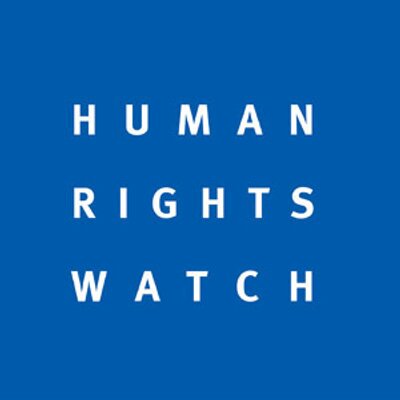Kenyan authorities have not responded adequately to flash floods resulting from heavy rains, Human Rights Watch said today. The floods have left at least 170 people dead; displaced more than 200,000; destroyed property, infrastructure, and livelihoods across the country; and exacerbated socioeconomic vulnerabilities.
Kenya’s government has a human rights obligation to prevent foreseeable harm from climate change and extreme weather events and to protect people when a disaster strikes. Extreme weather events such as flooding are particularly threatening for marginalized and at-risk populations, including older people, people with disabilities, people in poverty, and rural populations.
“The unfolding devastation highlights the government’s obligation to prepare for and promptly respond to the foreseeable impacts of climate change and natural disasters,” said Nyagoah Tut Pur, Africa researcher at Human Rights Watch. “Kenyan authorities should urgently ensure support to affected communities and protect populations facing high risk.”
Kenya and most of the East Africa region has been lashed by relentless and devastating downpours in recent weeks, as an El Niño weather pattern exacerbates the seasonal rainfall. Recent studies suggest that climate change could be a contributing factor. The government has acknowledged that the extreme weather events were predictable.
Over the last few days, social media videos and mainstream media reports indicate that the affected people were receiving little to no support from the government to reach safety and to access essential services such as shelter, health care, and food assistance. Media reported that police and rescue teams’ help lines were unresponsive in some locations.
In its plans to combat climate change, including the comprehensive National Climate Change Action Plan 2023-2027 and its disaster response plans, Kenya identified flooding as a risk, identified areas that could be affected, and highlighted ways to mitigate it. The country also has a national disaster management unit.
As early as May 2023, the Kenya Meteorological Department warned that the country would experience enhanced rainfall due to El Niño between May-July and October-December, continuing into early 2024.
That same month, the government announced that at least 10 billion Kenyan shillings (about US$80 million) would be released to prepare a nationwide response. The Public Finance Management Act of 2023 requires county governments to set aside 2 percent of their annual budgets for disaster response. However, the government failed to put in place a timely national response plan. In August 2023, the Ministry of Health started coordinating with county governments to stock up medical supplies and begin cholera vaccinations. But in October, President William Ruto announced, mistakenly, that Kenya would not experience El Niño rains as earlier predicted.
Between October and February, 1,781 people died because of riverine floods, flash floods, and landslides, caused by heavy rains in the Western, North Eastern, Central, and Coastal regions. The Kenya Red Cross Society also reported an increase in waterborne diseases like cholera and diarrhea.
It is unclear what happened to the funds that had been set aside for the response, with some media reporting that the money was misappropriated. In November, parliament approved an additional 8.2 billion Kenyan shillings (about $60.7 million). An official with the Kenya Red Cross Society told Human Rights Watch that Kenya seems to have the requisite capacity and resources to adequately prepare for the heavy rains, but the government was slow to act despite warnings from the meteorological department and its partners.
Despite these harsh lessons from seasonal rains in late 2023 and meteorological department warnings, the authorities did not take appropriate measures to avert further disaster in early 2024 and were slow to respond, Human Rights Watch said. It was not until April 24, after nearly a month of heavy rains and many deaths, that President Ruto announced the creation of a multi-agency team to manage the response. Opposition leaders and clergy have called on the government to declare a national disaster and to hold accountable those responsible for inaction.
In low-income neighborhoods in Nairobi like Mathare, Mukuru Kwa Jenga, and Kariobangi, the flood impact has been quite severe due to less solid structures, congestion, and poor sanitation infrastructure, leaving people homeless and creating public health risks like malaria, cholera, and diarrhea. A well-known human rights activist, Benna Buluma, known as Mama Victor, was among 10 people who died on April 4 trapped in their houses by floods.
On April 29, the Mathare Social Justice Centre said on social media that at least 200 people had been displaced and still had not received support from county or national governments for temporary shelter, food, and other needed items.
The authorities should conduct a thorough and credible investigation to identify what went wrong and lessons learned, Human Rights Watch said.
The meteorological department has stated that the rains will continue in May.
On April 30, the government announced that people living in at-risk locations should relocate within 48 hours or be forcefully evicted.
Kenyan authorities have a responsibility to ensure that all possible steps are taken to prevent or alleviate human suffering arising from the ongoing floods and to realize the rights to life, health, housing, food, water, and sanitation of those most affected. The authorities should ensure that the response is inclusive and respects people’s rights.
“The government should ensure a timely and effective approach to disaster management,” Pur said. “This could ensure that future catastrophes are not as devastating and deadly.”
Distributed by APO Group on behalf of Human Rights Watch (HRW).

